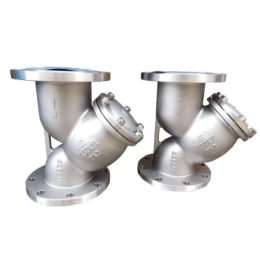
Quarter Turn Electric Actuator
Introduction
Quarter Turn Electric Actuators are devices used to automate the process of controlling valves in industrial applications. These devices are used to control the opening and closing of valves that control the flow of fluids or gases in pipes. Quarter Turn Electric Actuators are commonly used in ball valves and butterfly valves, and they are designed to provide precise control over valve positioning.

PRODUCT RANGE
Torque Rage 125 N.M to 2000N.M (90ft-lbf to 1475 ft-lbf)
Voltage suppl: 24VDC, 220V AC~460V AC, 50HZ/60HZ, Single or Three Phase
DESIGN FEATURES
IP68, Double-seated structure
Isolation: Class F, Class H (optional)
Optional Function
Modulation I/O signal 4-20mA
Explosion Proof (ATEX, CUTR)
Fieldbus System
Modbus, Profibus, etc.
Advantages of Quarter Turn Electric Actuator
Quarter Turn Electric Actuators offer several advantages over manual valve control. They are more precise, reliable, and efficient than manual valve control. Electric actuators can be controlled remotely, which makes them ideal for use in hard-to-reach or hazardous locations. They are also more durable than manual valves, which makes them an ideal choice for industrial applications.
Applications of Quarter Turn Electric Actuator
Quarter Turn Electric Actuators are widely used in a variety of industrial applications. They are commonly used in the oil and gas industry, chemical processing, water treatment, and power generation. They are also commonly used in HVAC systems, food processing, and pharmaceutical manufacturing.

Benefits of Quarter Turn Electric Actuator
Quarter Turn Electric Actuators offer several benefits to industrial applications. They provide precise control over valve positioning, which improves the efficiency and safety of industrial processes. They also reduce the need for manual labor, which reduces the risk of injury and improves productivity. Electric actuators are also more reliable than manual valves and require less maintenance.
Installations
Quarter Turn Electric Actuators are easy to install and can be retrofitted onto existing valves. They can be installed in any position, and they are designed to fit a variety of valve sizes and types. The installation process is straightforward and can be completed by a qualified technician.
- Ball Valve Pressure Limitation And Troubleshooting Methods
- “Understanding Floating Ball Valves: Essential Components for Reliable Fluid Control in Hydraulic Systems”
- A Lift Check Valve and Its Applications
- Six matters needing attention when choosing a regulating valve
- Electric Actuated Globe Valve
- Wafer Type Butterfly Valve Installation Instructions



